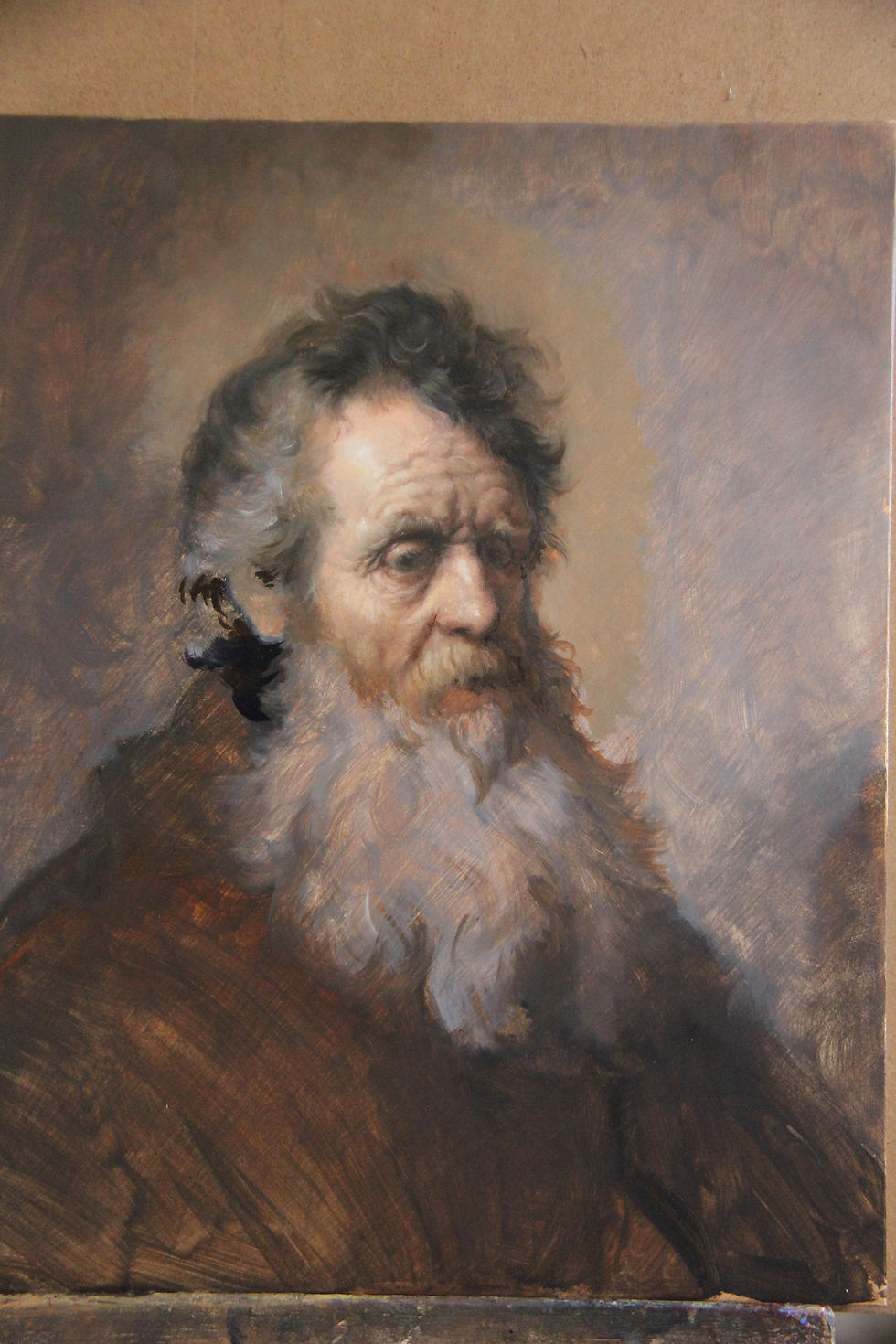Copying Rembrandt
- Zarahn Southon

- Feb 13, 2017
- 2 min read

Copy after Rembrandt's portrait of a lady 1634
I find copying old master work rewarding. You're almost getting into the head of the artist. Compositional technique, light, perspective, anatomy - I could go on - are just some of the things you encounter when referencing an artists work. At the end of 2016 I copied a Rembrandt painting Portrait of a young woman 16349 (above).
Rembrandt is one of my favourite painters. His use of structure and light is astonishing. What I particularly like about his use of structure is the influence seen in his drawing and painting of his former teacher Pieter Lastman. Although he trained with Lastman as a journeyman for a mere six months the methods Rembrandt acquired from his study to render anatomy in a architectural manner lasted a life time.
The classical realist Nelson Shanks once said that Rembrandts portraits have a simplicity to them which I would agree - when you are looking at the scale and composition of the works. Although I believe it is in the Tronie that Rembrandt excelled like no other painter of his generation. It is the Tronie that we find the inner workings of Rembrandt and his mastery of form and structure. From the large shapes to the very small and specific. These forms are weaved and stitched together with the most fluid and dexterous touch.

Since NZ has not - as far as I know- one Rembrandt painting I will use the internet for my copy.
A good reproduction is paramount. Comparing the one above with the one below you can see just how different colours are when photographing work under different exposures. I think I'll use the monochromatic one above. Google art is my source.






Comments